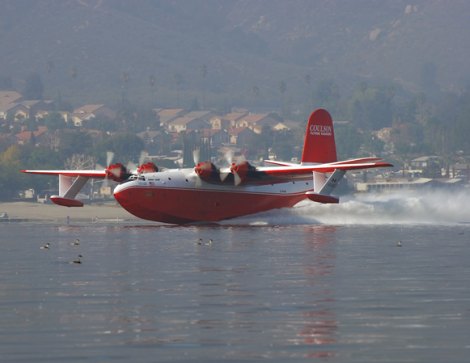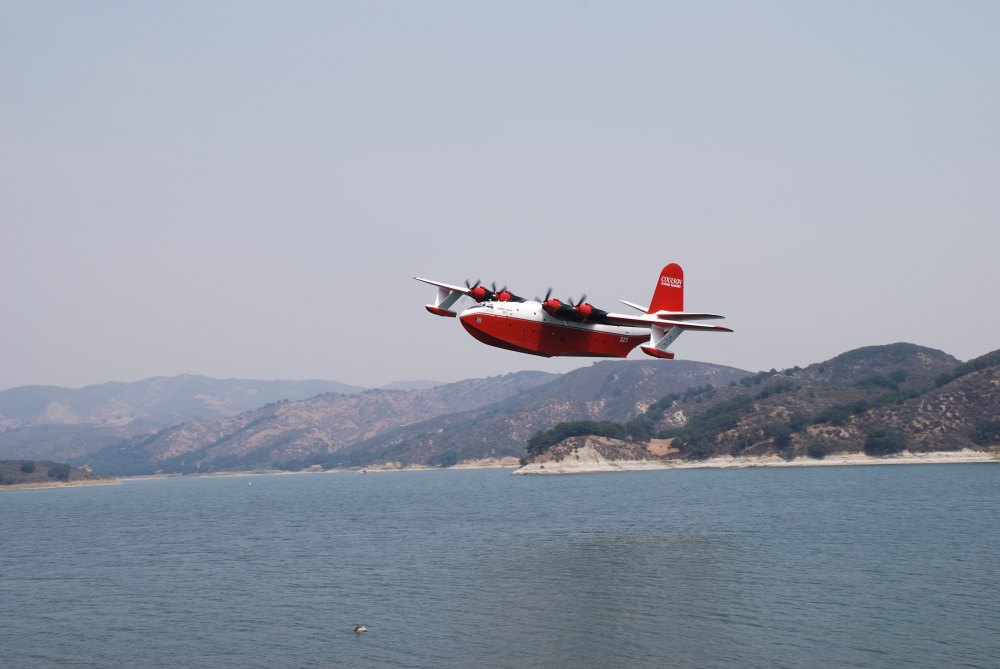Super Scooper Works La Brea Fire
Unique Water Bomber Refills from Cachuma

A Martin Mars “Super Scooper” airplane made an historic landing and take off on Saturday, August 15, 2009 (landed at about 1 p.m.) at Santa Barbara County’s Cachuma Lake.
A new tool in the arsenal of Santa Barbara firefighting efforts, the unique aircraft can restock water for suppression efforts without landing, in this case scooping from Cachuma Lake to work La Brea Fire.

A description from the Web site of Coulson Flying Tanker explains:
The Mars, with a 60,000-pound payload of foam, is like “a huge wet blanket” … The highly experienced Mars pilots, working closely with the Incident Commander, deliver the water or foam right where it is needed. The ability of the machines to drop massive amounts of foam lends itself particularly well to the suppression of urban/rural interface fires.
The company claims to be accident free – in the air and on the ground – since the 1961 loss of a prototype water-bomber.
The crew of four includes a captain, first officer, and two flight engineers. who also work on maintaining the aircraft.
More from the Web site:
The most frequently asked question regarding the Mars is “How do they pick up their water?” This part of the flying operation is, perhaps, the most demanding in terms of teamwork among the crew. The Captain executes a normal landing, keeps the the aircraft “on the step,” and allows the speed to decrease to 70 knots. He then passes engine power to the flight engineer and selects the scoops to the “down” position. The ram pressure for injecting the water into the tanks is such that the aircraft is taking on water at a rate in excess of a ton per second. To account for this added weight, the flight engineer must advance the throttles to maintain a skimming speed of 60-70 knots to ensure the aircraft remains on the step. Pickup time is, on average, 25 seconds. When the tanks are full, the captain will have the scoops raised, call for takeoff power from the flight engineer, and carry out a normal loaded takeoff. Once airborne, the foam concentrate is injected into the water load (normally, 30 U.S. gallons of concentrate into the 7,200 U.S. gallon water load) where it is dispersed and remains inert until the load is dropped. Once dropped, the tumbling action causes expansion which converts the water load into a foam load. This process is repeated for each drop. In other words, this vital teamwork is carried out, on average, every 15 minutes per aircraft. For a Gel drop, the concentrate is injected during the scooping process to allow even mixing.
Here’s the link to the Martin Mars Web site.



